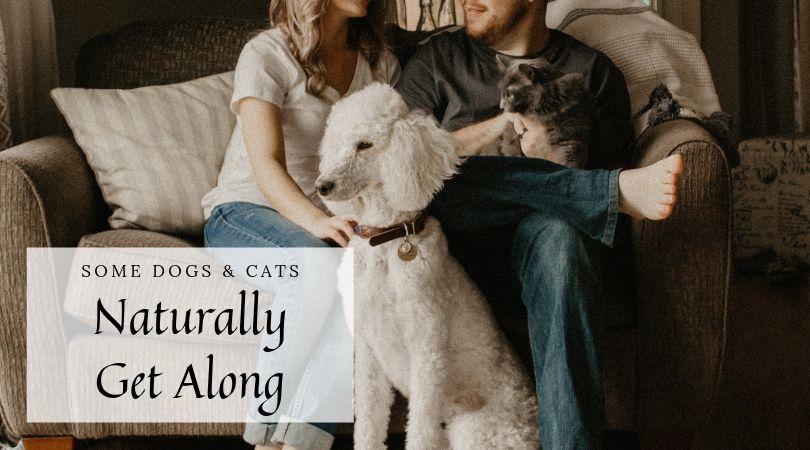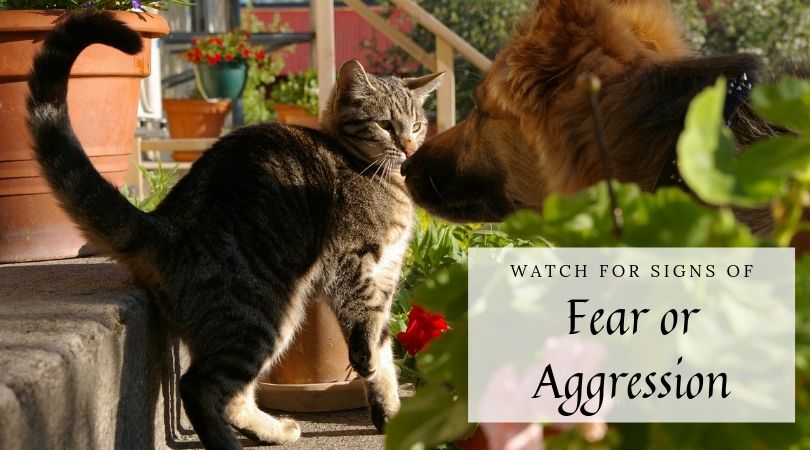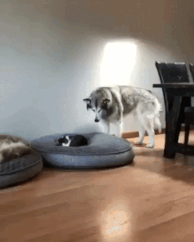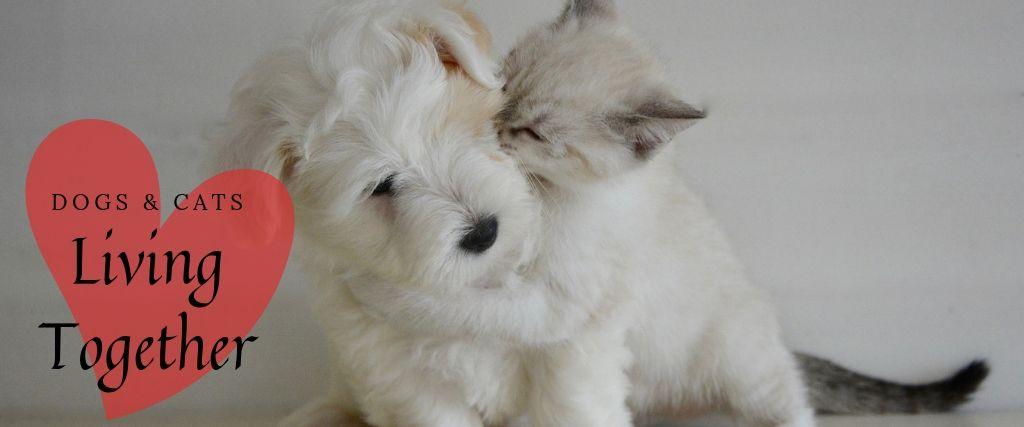“Fire and brimstone coming down from the skies… Rivers and seas boiling… Dogs and cats living together... mass hysteria!” The Ghostbusters may have had the right idea with many of these signs of calamity, but cats and dogs living together doesn’t have to be a disaster.
Just like there are all different kinds of people in the world – some people get along and some people don’t – dogs and cats are the same. Some dogs and cats will naturally get along, and some won’t. However, it’s vital that all companion pets have a safe home, so if you’re set on adding a new species to your home and everyone happily co-existing, it’s important to create a non-violent, healthy environment (aside from providing general preventative care). Here are some tips for creating a happy mixed-pet home.
Assess Your Pet’s Temperament
Most people generally start with one type of pet first and then decide to add the other type. Your dog or cat might seem totally chill, which is why you’re considering adding a new element to the mix, but be sure to really assess the situation before you go changing things up. Have you ever seen your cat around dogs (or vice-versa)? How did they react? If you’ve never seen your dog with a cat or your cat with a dog, you may consider staging a test run just to get an idea of how they might respond to a new type of animal.

It’s always easier to create a mixed-pet home when your first pet is easy-going to begin with, but if they’re not, it doesn’t always mean you can’t get a second pet. And on the flip side of things, just because your first pet seems relatively mellow, it doesn’t mean it’s going to be a walk in the park to introduce a second pet into your home. Always consider the personalities of both animals – it may even be helpful to look for a companion that has already been exposed to the other species in the past.
Prepare Ahead of Time
Once you have decided to take the plunge and change your current dynamic, it’s important to prepare, prepare, and prepare some more. Make sure you have set up separate areas ahead of time for each pet. They each need their own beds, toys, ways to socialize with you, and places to get away from one another when they want.
Your dog should have his or her own space to interact, play, and exercise without interfering with the cat, cat toys, litter box, etc. Likewise, create a quiet, sheltered place for your cat that does not force him or her to eat and use the litter box in the same place. The cat’s litter box and feeding/water stations should always be out of reach of the dog, as you don’t want the dog to be eating the cat’s food. Additionally, some dogs will use the litter box as a “cookie jar” if they can access it, and you definitely don’t want that.
Don’t Rush Things
When you first bring home your new dog or cat, it’s important to plan ahead and take your time. By letting a loose cat and an off-leash dog meet each other in an open room for the first time, you are probably setting up both animals to fail. Instead, keep the animals separate over the course of a few days, rotating which animal is restrained and which has freedom in order to allow each one plenty of time to investigate the other’s scent.
Whether you confine your dog to a crate or another room, if the dog constantly digs at the separation barrier or barks at the cat for more than a day or two, the relationship most likely won’t work without the help of a professional trainer. Until the dog is calm (or at least not in a craze over the cat) and the cat is calm, eating and using the litter box normally, keep them apart and securely confined when no one is home (so unsupervised interactions never occur).

When you are ready for the next step, allow the cat and dog to both be in the same room at the same time, but keep the dog securely on a leash. If you ever notice any fear or aggression displayed on either the cat or dog’s part, keep with your controlled, leashed interactions longer. Continue with this type of restrained interaction until the dog is calm and ignores the cat, and the cat is calm, eating and using the litter box normally.
Warning Signs
Even with careful introductions, you may find that some cats and dogs are just not receptive to living together in harmony. According to American Humane, some warning signs that your pet is in danger include:
- Your dog is overly focused on the cat (or the door of the room where the cat stays), completely ignores you, or lunges suddenly as soon as the cat moves
- Your cat continuously growls, hisses, or swats at the dog, no matter how long you give your pets to adapt to the situation
- If at any time one lunges toward, growls at, snaps at, or shows any aggression while the other is calm, quiet, and still
Have a backup plan in cases like these. Address any signs of distress ASAP – even with the help of your veterinary team. If your cat and dog are unable to get along, are you able to keep them in closed-off, separate spaces per pet for their entire lives? Do you need to rehome a pet or return a new adoptee? It’s better to ensure the safety of these animals than it is to keep a pet in a home that presents danger.
Life in General

If your cat and dog have learned to live together happily and successfully, make sure to maintain a regular routine for both. Give your cat and dog individualized play time, socialization, regular health care, exercise, etc. Additionally, you will need to watch for some common problems that occur in cat/dog households, such as your cat eating the dog’s food, your dog eating from the litter box, the cat stealing dog toys, the dog hogging the cat’s bed, etc. If you have multiple cats and/or dogs, never let multiple dogs try to engage a single cat in rough play, and don’t let multiple cats take over a single dog’s resources.
Having a cat and dog living together in harmony doesn’t require a catastrophic event of Ghostbuster-like proportions, but it does take some work. Before you try to mix the two, consider your options carefully, and practice extreme patience when introducing the two. And as always, please reach out to us with your questions or concerns or schedule your pet's appointment here.
The Drake Center for Veterinary Care is an AAHA-accredited animal hospital located in Encinitas, CA. The Drake Center loves being a source of information for all pet owners across the country however if you have any questions regarding pet care and do not live in Encinitas, CA or surrounding cities, we encourage you to contact your local veterinarian.

